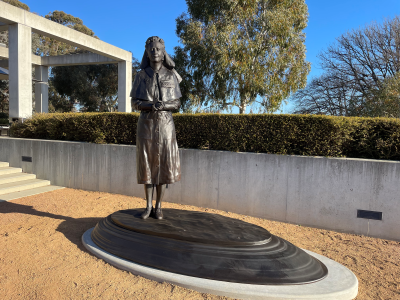The first statue of a woman has been unveiled at the Australian War Memorial and all the late Lieutenant Colonel Vivian Bullwinkel had to do was survive a massacre, survive a sinking ship, and survive three years in a Prisoner of War Camp.
Vivian’s 2.4-metre bronze image is also the first statue of an individual nurse at the Australian War Memorial. The Australian War Memorial did not fund the sculpture. Instead, funding was spearheaded by Australian College of Nursing CEO Kylie Ward.
The sculpture’s artist, Dr Charles Robb, told ABC Radio Canberra that it was clear that she was held “in such immense love and affection”.
Not only was Vivian the sole survivor of the Banka Island Massacre, when she returned to Australia back to civilian life, she advocated for nurse’s higher education and is the reason why we have nursing degrees in universities today.
“The thing that really touched me at the unveiling was the wonderful ceremonial significance of the sculpture,” he says. “The incredible love that she engenders in all that encountered her from the nursing profession and the military profession at large.”
Dr Robb says he designed up to 25 versions of her portrait to really understand Vivian. He says he had 400 photos from the Australian War Memorial’s vast archive to work from.
The sculpture includes 22 inlaid stainless-steel discs reflecting the 22 women killed in the Banka Island Massacre. The discs are arranged at the base of the sculpture as a reflection of the stars that would have been visible in the night sky on 16 February 1942.
The sculpture aims to recognise not only Bullwinkel but all Australian nurses who have lost their lives, survived atrocities or made sacrifices while serving their country.
Australian College of Nursing CEO, adjunct professor Kylie Ward, says she was inspired to think of the generations of children who will come and see a figure in bronze of a nurse and midwife at the Australian War Memorial.
“The sculpture will be a powerful and long-lasting symbol of nurses’ selfless service to Australia and its citizens whether in war or in peace.”
Australian War Memorial director, Matt Anderson says, “Vivian’s name should be renowned in every Australian household, as should the story of her inspirational life as a courageous leader, a proud nurse and the first woman to serve on the Council of the Australian War Memorial.”



